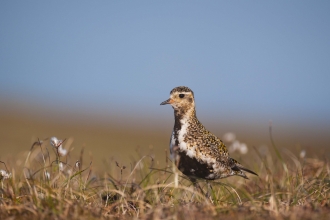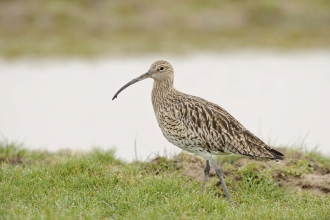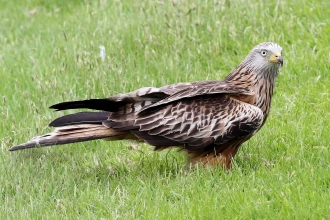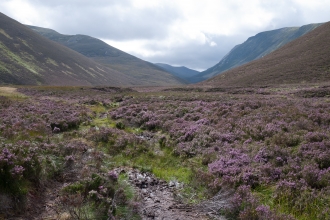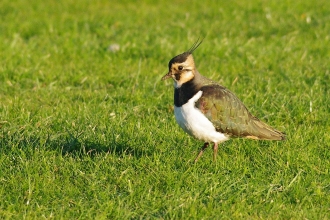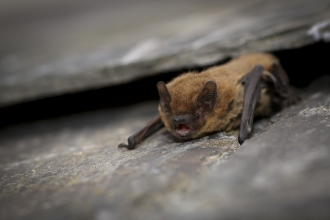
Photo: © MWT/Tamasine Stretton
According to the State of Nature 2023 report – the latest benchmark for the status of wildlife and biodiversity in the UK – it is climate change, along with the way we manage land for agriculture, that is having the most profound impacts on our wildlife.
For this reason, Montgomeryshire Wildlife Trust (MWT) supports the move away from fossil fuels, towards renewable energy. In the UK, we’re faced with significant challenges on how to deliver this appropriately and at pace. An increase in the use of renewable sources of energy is urgently needed, and we consider wind power can help to meet the UK’s energy requirements in a sustainable manner.
However, wind farms should not be located in areas where their known direct impacts on wildlife are likely to be severe, or would cause significant damage to a protected or irreplaceable habitat. Wind farms must be constructed in a way that minimises the damage to the immediate environment, even where this increases the cost of construction.
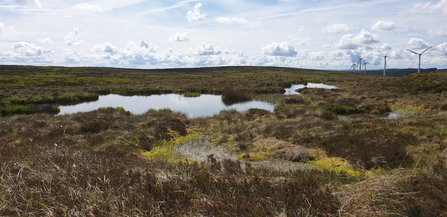
Photo: © MWT/Tamasine Stretton
The right wind farm in the right place
Poorly sited wind farms, and their associated infrastructure, wreak havoc on the local environment, both during the construction phase and beyond. The major issue is habitat loss, degradation and fragmentation – simply put, not only do we lose already rare wildlife habitat, where we need it most, but the habitat which remains is in a poor state and is no longer properly connected to the rest of the landscape: something we now know is fundamental for all nature.
Precious peatland
Additionally, much of the land which presents the best opportunities for wind also tends to be rich in peat-based habitats. Wind farms are built to reduce carbon emissions, yet peatlands represent a worldwide, land-based habitat with great importance for major, long-term carbon storage. By building on peat, we release this carbon store as carbon emissions into the atmosphere. But most importantly peatland is formed over millennia - and once it’s gone it’s gone forever.
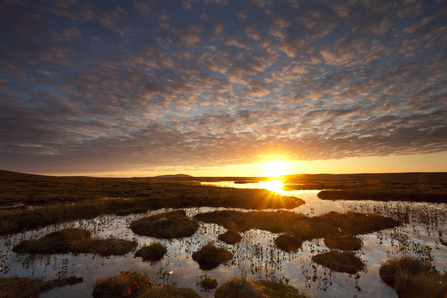
Mark Hamblin/2020 VISION
As stated in Chapter 6 of Planning Policy Wales: “Peat soils are extremely fragile and if compromised put at risk the resilience of the ecosystems they support. Peatland habitats cover only 3-4% of Wales yet store in the region of 20-25% of all soil carbon. Where peat is identified within proposed developments considerable weight should be given to its protection because of its special importance in underpinning and supporting national natural resources such as soil carbon, biodiversity and flood management, and unless other significant material considerations indicate otherwise it will be necessary to refuse permission.”
Planning Policy Wales also states about habitats including peatland and blanket bog: “Such sites form the heart of resilient ecological networks and their role and the ecosystem services they provide must be protected, maintained and enhanced and safeguarded from development. It will be wholly exceptional for development to be justifiable in such instances.”
Read our full Windfarm Position Statement 2024 here.
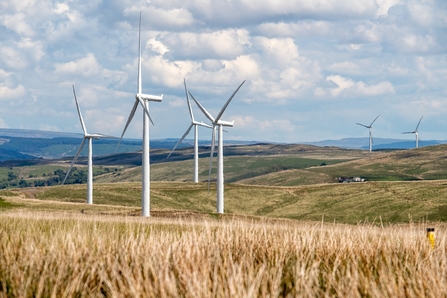
Wind turbines can impact birds and bats directly, as well as habitats. Photo: Ed White from Pixabay
The birds and the bats…
Habitat destruction obviously impacts on all the wildlife species which depend upon it, but, on top of this, wind turbines are a particular threat to birds and bats. Wind developments tend to be located in upland areas with strong wind currents and therefore big energy-generating potential. Birds – especially raptors such as Red Kites – use these currents as ‘highways’, bringing them into contact with the turbines, resulting in death or severe injury. In addition, poorly sited wind farms disrupt migration routes, as well as destroying nesting and feeding habitat. Find out more here from the British Trust for Ornithology
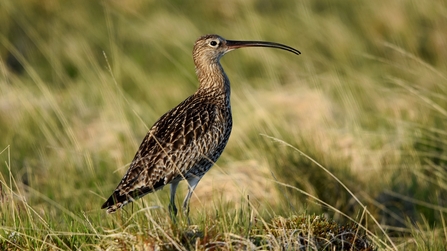
The iconic Curlew, already a threatened species, may be affected. Image: dp1616 from Pixabay.
In addition, nature conservationists have been concerned for some time about how poorly-sited wind farms could be displacing certain upland breeding bird species, particularly the Eurasian Curlew. This threatened species has been experiencing severe declines in its populations, which are already very fragmented. However, wind power, along with other renewables, is still a relatively new source of energy generation, and more robust studies are needed to understand this link.
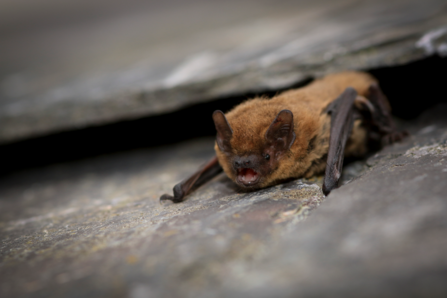
Common Pipistrelle bat © Tom Marshall
Similarly, there is increasing evidence of the impact of wind turbines on bats, with data from Europe and the US from the early 2000s, and now evidence from the UK. According to Bat Conservation Trust: "Direct impacts of wind farms can include collision and barotrauma (damage to tissues from air pressure changes around turbines); indirect impacts can include habitat loss (roosts, commuting routes and foraging areas) and fragmentation.”
Getting involved
If you want to make a contribution to ensuring wind farm developments are sited with care, with minimal disruption to rare wildlife and habitat, report wildlife sightings. The more data about where our plants, animals and fungi are, the stronger the case for amending, moving or even preventing inappropriate development. There is lots of information about how to do this here.
Wildlife at risk from poorly-sited wind farms
These are just a few of the much-loved species and habitats which can be affected if the wrong wind farm is sited in the wrong place
For more information
Follow Montgomeryshire Wildlife Trust on social media for more about the developments, in due course, or send us a message to news@montwt.co.uk if you'd like to receive updates about this and other news and events by email.
You can also use the links below to get in touch with your local MP - to tell them why you have concerns about the impact on wildlife these wind farm developments could have - or to send a letter to the editor of your local newspaper or magazine.

